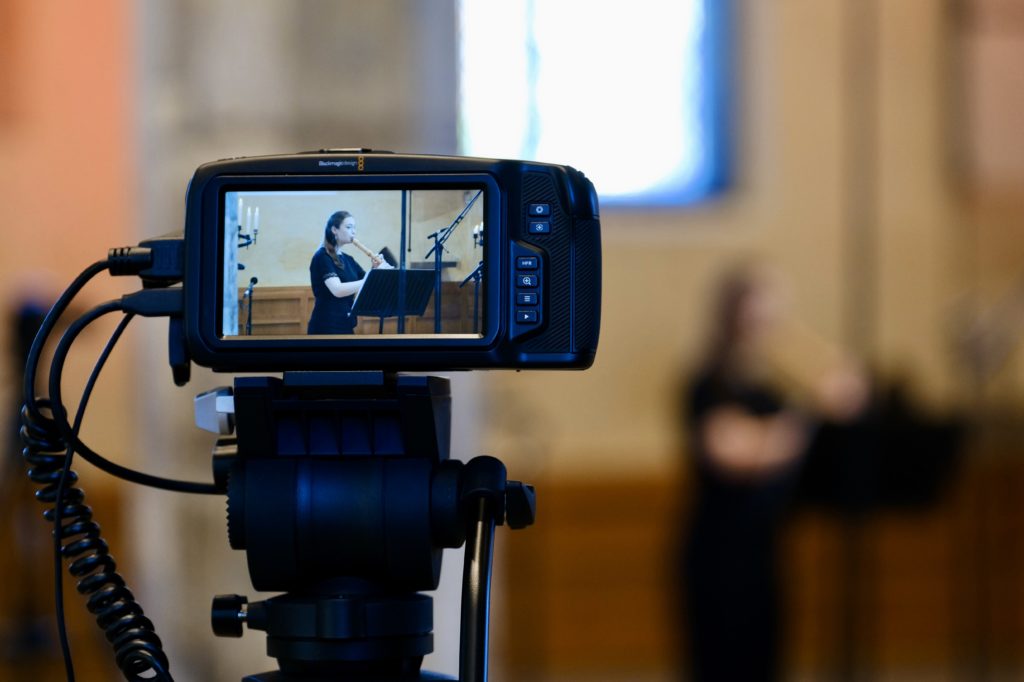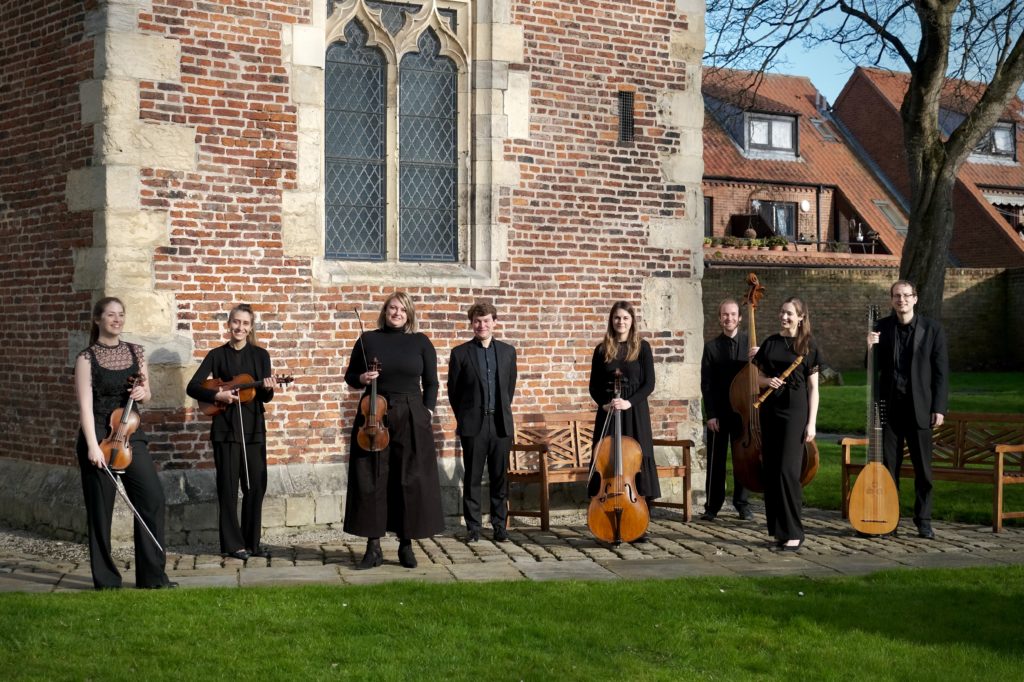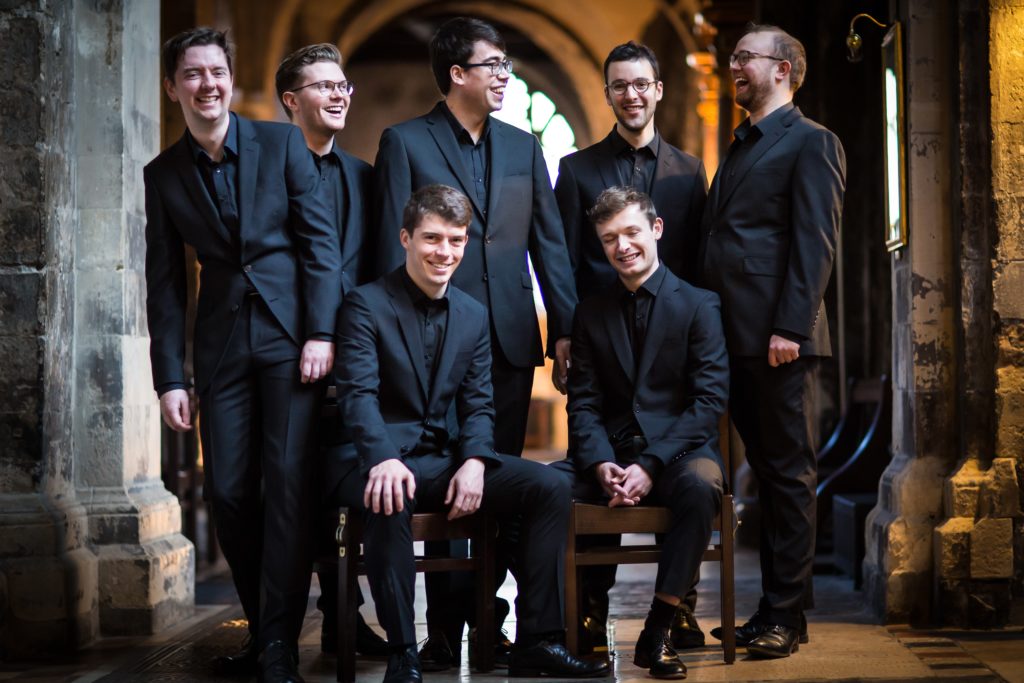
REVIEW: Awaken, National Centre for Early Music online, York, from various venues, March 27 and 28. Streaming until April 30 at www.ncem.co.uk/awaken
AWAKEN had all the right vibes. Five events over the weekend signalled the beginning of the end of our enforced hibernation. They also heralded the start of spring. As if in tune, the weather co-operated and turned warm and sunny.
All the concerts had been filmed in venues around York the previous week, but they had the feel of live events. We began with a peripatetic tour by the Gesualdo Six – a slight misnomer, since they are really seven with their director Owain Park, who also sings from time to time, though there are never more than six singers in action at once.
The group revelled in the free-wheeling motet style of four Englishmen by the name of John from the first half of the 15th century. The rhythmic verve of John Pyamour was nicely contrasted with a smoother take on John Forest and tenderness from John Plummer; all these were trios. But John Dunstaple’s quartet Veni, Sancte Spiritus outdid them all, a step ahead of his compatriots.
In Merchant Adventurers’ Hall, three Frenchmen from later that century sounded more calculating, more predictable, though Josquin des Prez’s attention to words in Nymphes des Bois – the only secular piece in the programme – was exquisite. It was good to hear, this time in the Hall’s chapel, John Thorne’s Stella Caeli, with neat passing harmonies and major-chord cadences that doubtless were heard in York Minster during his time as Master of the Choristers (1542-73).
Extracts from Lamentations by another three Frenchmen prepared us for Holy Week, with Brumel’s warmly autumnal Good Friday lection, without countertenors, topping the bill and bringing comfort amongst the sorrow. Byrd’s incomparable Infelix Ego, reflecting our current sufferings and sung under the Minster’s Great East Window, made a transcendent finale, its coda deeply affecting. The Gesualdos could not have got Awaken off to a better start.

At the National Centre, recorder virtuoso Olwen Foulkes led the splendid Ensemble Augelletti, an octet of players who homed in on music connected with John Baptist Grano. He was principal trumpeter in the orchestra at the King’s Theatre, Haymarket where he premiered several Handel operas. He was also an operator who had a finger in several pies, but thrived even when in prison for debt.
Given the company he was keeping here, Grano’s own Sonata in F for recorder and continuo was relatively run-of-the-mill, though its Spirituoso was indeed spirited and the succeeding Largo eloquently plaintive. Foulkes was on top of her game throughout, as also in a concerto by John Baston, where her soprano recorder danced wittily in its final Presto.
In Handel’s Trio Sonata Op 2 No 4, Foulkes worked effectively in tandem with Ellen Bundy’s violin and all five players relished its closing, very English, jig. A final word for the supremely attentive cellist Carina Drury, a player I’d be happy to have on my team any time.
Staying in St Margaret’s Church (alias the National Centre), the viol consort Fretwork was joined by York countertenor Iestyn Davies in a programme of 16th century North German music, spearheaded by two arrangements of Vaughan Williams songs. Silent Noon was an odd opener and not heat-hazy enough, but The Sky Above The Roof was much more telling, though Davies’s diction was woolly. (His Latin later was marginally better, but his German admirably clear.)
Davies’s other contributions all concerned music connected with Holy Week and proved that lockdown has in no way hurt his evocative powers, his countertenor gliding smoothly over even the most taxing challenges. In a Lamento by Johann Christoph Bach, often described as JSB’s most talented forebear, he was pleadingly penitential, amid textual floods of tears. Franz Tunder’s Salve Mi Jesu was appropriately prayerful, finding genuine serenity in its peaceful ending.
Most potent of all was Christian Geist’s reaction to Holy Saturday, with semi-recitative for the biblical narrative, culminating in an aria of considerable power, which benefited from Davies’s operatic experience.

Fretwork alone was rhythmically lively in Schein’s Seventh Suite from Banchetto Musicale (1617), notably in the vigorous syncopation of its galliard. The rapidly changing variations in Scheidt’s Canzon Super O Nachbar Roland were brilliantly negotiated, tremolandos and all, though it was a pity we were not given a chance to hear the song by itself.
It took a while to adjust to the sound of period instruments in Schubert’s mighty String Quintet in C, played by the Consone Quartet with Alexander Rolton as second cellist, also at the National Centre.
Let us dispose of the reservations first. Balance was never quite right, though I channelled the sound through my best speakers: we needed more from the outer voices, first violin and second cello. This was almost certainly a problem of microphone setting. There was also a disparity of approach between the cellists, one using more vibrato than the other.
The work got off to a cautious start, as if every effect was being over-calculated. Spontaneity began to surface with the repeat of the exposition. The second movement hovered to the point of stasis, with definition undermined by the second cello’s over-restrained pizzicato (probably microphones again).
Thereafter things changed very much for the better. The players began to enjoy themselves in a robust Scherzo. There was a slight loss of focus in the Trio, but caution was finally thrown to the winds when the Scherzo returned with even more verve. A strong, confident finale did much to compensate for the earlier diffidence and the acceleration towards the tape was neatly managed. I also enjoyed the encore, a sensitive setting of the song Frühlingsglaube (Faith In Spring), with cello to the fore.
Awaken’s finale shifted to St Lawrence Church, where Robert Hollingworth directed his vocal ensemble I Fagiolini (with some stiffening from former members of The 24) and the English Cornett and Sackbut Ensemble. The evening was entitled Super-Excellent, a word taken from the travel writer Thomas Coryat, preaching the wonders of Venetian music in 1608. Naturally, the programme was largely Italian or Italianate.

Hollingworth himself expounded on each piece in advance. He was most informative, but his enthusiasm sometimes led him to raise expectations unreasonably. Polychoral effects that were undoubtedly stunning in St Mark’s, Venice, were not quite so impressive in the less rewarding acoustic of St Lawrence.
Music by Giovanni Gabrieli appropriately framed the programme. With voices and instruments used interchangeably, Buccinate featured thrilling fanfares. No less stirring were the recurring Alleluyas in the multi-choir In Ecclesiis at the close, in a clever reconstruction by Hugh Keyte.
There were mass extracts from the Catalan composer Joan Cererols with three choirs overlapping, almost conversationally. Juan de Araujo, Spanish-born but working in South America, gave us an exciting Dixit Dominus, with jazzy rhythms heightened by strumming theorbo and guitar.
Solo tenor and bass respectively (no individual performers’ names were available) offered tastefully decorated motets by Grandi and Schütz, the latter an angry and sorrowful lament by David for Absalom, attended by four mournful sackbuts.
A florid cornett lit up a madrigal-style arrangement of a Palestrina ‘Ave Verum Corpus’. But for me the greatest surprise was Edmund Hooper’s verse anthem ‘O God Of Gods’, in a frankly superb reconstruction by William Hunt (who issued a recording of the work only last June). It proved that an Englishman could do it too.
Streaming of concerts is notoriously difficult, a path littered with potholes. Awaken was not perfect: there were occasional breaks in the sound and the odd unintended freeze-frame. Sometimes the camera lingered too long on an individual when what you wanted was to see the whole ensemble interacting. But it still served a vital role, reminding us how valuable live concerts are and renewing hope that they will soon return.
Above all, these events showed faith in musicians, many of them young, that despite everything we treasure their talents and will welcome them back with open arms (or the socially distanced alternative) just as soon as we are allowed. You have the rest of April to catch up with all these brave souls. I heartily recommend them.
Martin Dreyer
